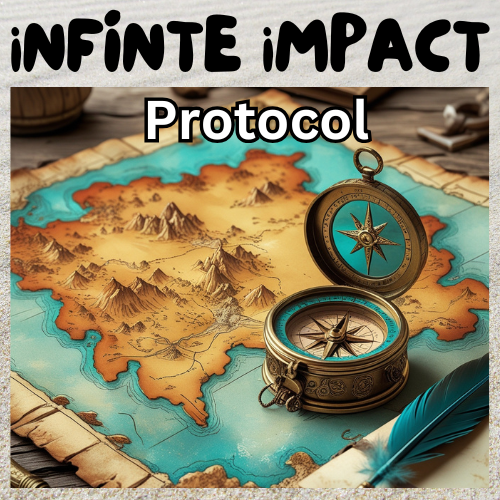No one can make you feel inferior without your consent. — E. ROOSEVELT
You’re at the top of your game—accomplished, respected, and seemingly invincible. Then, in a blink, life decides to play its favourite party trick: pulling the rug out from under your feet. Not just a gentle tug, mind you, but the kind of yank that leaves you wondering which way is up.
One moment you’re sitting you your corner office with a view, confidently steering your career, and the next, you’re grappling with a painful international relocation, a crumbling marriage, and a health scare that leaves you questioning all your life choices. Meet Stephan—a man whose life took an unforeseen nosedive despite his impeccable track record.
Stephan was the guy everyone wanted to be – the executive who made success look effortless. When his company offered him that prestigious international position, it seemed like yet another feather in his already well-decorated cap. Little did he know he was about to star in his own personal version of “Improptu Implosion: The Executive Edition.”
How do you rebuild your self-confidence when everything you used to point to and say “That’s me!” has vanished into thin air?
Stop right there – this isn’t another one of those “you just need to think positive!” stories that make you want to throw your self-help book across the room. This is about how the stories we tell ourselves can literally rewrite our reality.
What if the very disaster that stripped Stephan of his old identity also held the secret to his reinvention? Instead of resigning himself to a life defined by loss, he found the audacity to rewrite his story. And that’s the nugget of wisdom we’re here to explore. In the paragraphs that follow, we’ll dive into how you, too, can transform life’s unwelcome surprises into the launchpad for a bolder, brighter, reinvigorated version of yourself.
1. Stephan’s Fall: When Confidence Crumbles
Remember that corner office Stephan had? Well, his new one came with a view too – a perfect vantage point to watch his life unravel in spectacular HD. The promotion that had him practising his humble-brag speech turned into a masterclass in cultural miscommunication. His trademark straight-shooting leadership style, which had served him so well back home, landed about as smoothly as a lead balloon in his new environment. Watching his team’s eyes glaze over in meetings, he started to wonder if he’d lost his touch – or worse, never had it in the first place.
Then came the text message heard ’round the world. His wife wasn’t just homesick; she was done. Fifteen years of marriage wrapped up in a few carefully crafted paragraphs on WhatsApp. The distance, she said, had made things clearer. Translation: she’d checked out long before he’d checked into his new life abroad. The empty apartment suddenly felt a lot emptier.
His body, ever the loyal employee, decided to join the mutiny. What started as “just stress” morphed into full-blown anxiety attacks and mysterious health issues that had him on first-name basis with the local ER staff. Nothing quite says “rock bottom” like having your doctor suggest a therapist while you’re still wearing a hospital gown.
The man who once introduced himself with his title and company name now struggled to answer the simple question: “Who are you?” Without the corporate armour, the wedding ring, or even the basic ability to trust his own body, Stephan felt like a stranger in his own skin.
Here’s the kicker about accomplished professionals like Stephan: they’re masters at building impressive towers of confidence – all balanced on the precarious foundation of external validation. Take away the business cards, the accolades, and the perfect family photos, and suddenly that tower looks about as stable as a Jenga game after a few rounds of drinks.
2. The Confidence Myth: Why Accomplished People Struggle Most
We’ve all heard the story: confidence is like a bank account – you make deposits through successes and withdrawals through failures. Sounds logical, right? Well, so did geocentrism until Copernicus came along.
Confidence isn’t something you stockpile like emergency supplies for a psychological winter. It’s more like a muscle you develop through use – or, in Stephan’s case, a story you tell yourself about who you are and what you’re capable of.
The science backs this up (and no, not just the kind that confirms what we want to believe). Research in neuroplasticity shows our brains are constantly rewriting their own user manual based on the stories we feed them. It’s like having an internal Netflix that only plays one show on repeat – whatever narrative we’ve chosen to believe about ourselves.
So maybe – just maybe – Stephan’s real problem wasn’t that his confidence account hit zero. He was just stuck watching the wrong show, telling himself the wrong story, and believing every word of it.
3. Rewriting the Story: Stephan’s Hero’s Journey
The turning point came in the most cliché way possible – through a dog-eared copy of Joseph Campbell’s “The Hero with a Thousand Faces” left behind by the previous tenant. (Sometimes the universe isn’t subtle with its messaging.) Between pages marked with coffee stains and questionable highlighting choices, Stephan found something unexpected: a new lens through which to view his story.
What if this wasn’t his ending credits but his origin story? What if he wasn’t Tony Stark losing everything, but Bruce Wayne in his defining moment? (Yes, I’m mixing Marvel and DC – sometimes transformation requires breaking all the rules.)
Instead of seeing his cultural struggles as proof of incompetence, he started viewing them as his hero’s call to adventure. Each awkward meeting became a chance to develop new leadership muscles. Those lonely nights? Perfect opportunities for self-discovery (though he could have done without quite so many of those).
The health crisis that once seemed like the ultimate betrayal? It became his “dark night of the soul” – the moment that forced him to stop running and start rebuilding. He learned to meditate (badly at first), discovered the gym (also badly at first), and finally figured out what people meant by “work-life balance” (still working on that one).
The man who emerged wasn’t the same one who’d stepped off that plane months earlier. He was something else entirely – someone who had not just survived but had actively chosen to evolve. The plot twist? He liked this version better.
4. Turning Your Setback into a Comeback: A Blueprint for Rewriting Your Own Story
Ready to be the hero of your own story? Here’s your writer’s toolkit:
First, get real about your current narrative. What’s the story you’ve been telling yourself? Is it a tragedy? A cautionary tale? Write it down – all the messy, uncomfortable bits. (Don’t worry, this is just the rough draft.)
Next, channel your inner sceptic. Would Sherlock Holmes buy your interpretation? Would Oprah? How would Morgan Freeman narrate this story? (Everything sounds more hopeful when Morgan Freeman narrates it.)
Now for the fun part: drafting your hero’s journey. Your setback? That’s your call to adventure. Those sleepless nights and difficult moments? They’re your road of trials. And that person you’re becoming? That’s your transformation in progress.
Finally, start living like the hero of your story. Because here’s the thing about confidence: it grows stronger every time you act like the person you want to become.
5. Seriously, though, how can rewriting your life story help you rebuild your self-confidence?
Rewriting your life story can significantly help rebuild your self-confidence by empowering you to take control of your narrative. This process involves several key aspects:
Changing Your Perspective: Rewriting your life story allows you to view past experiences through a new lens. Instead of focusing on failures or setbacks, you can reframe them as opportunities for growth and learning. This shift in perspective helps build resilience and boosts overall life satisfaction.
Challenging Your Limiting Beliefs: By examining and questioning the stories you’ve been telling yourself, you can identify and challenge limiting beliefs that may be holding you back. This process enables you to replace negative self-talk with positive affirmations and empowering statements, fostering a more confident mindset.
Creating a New Identity: Rewriting your story gives you the power to craft a new identity aligned with your goals and aspirations. This involves setting realistic goals and breaking them down into manageable tasks, visualising being confident in various situations, and stepping outside your comfort zone to learn new skills.
Cultivating Self-Compassion: An essential part of rebuilding self-confidence is treating yourself with kindness and understanding. Rewriting your story allows you to practice self-compassion, nurturing your mind, body, and spirit.
By rewriting your life story, you can update your identity leading to a more confident version of yourself.
6. Conclusion
These days, Stephan still has a corner office – but he doesn’t need it anymore. His confidence doesn’t live there. It lives in the story he tells himself every morning: not about the man who lost everything, but about the man who discovered what he was truly capable of when everything was stripped away.
Your own story is waiting to be rewritten. The blank page might look intimidating, but remember: every great tale starts with a moment of uncertainty. The only question is: what story will you choose to tell?
1. The Story Shift Journal The first step in rewriting your story is becoming aware of the current narrative. Every morning, take 15 minutes to write freely about your thoughts and feelings. During the first week, focus on observing your self-talk without judgment. Notice when you fall into patterns of negative thinking. For instance, Stephan might notice he feels most vulnerable during team meetings, where his old narrative of “I’ve lost my leadership ability/ I’ve lost my edge” surfaces strongly. By documenting these moments, patterns will emerge – perhaps certain situations, times of day, or interactions that consistently trigger self-doubt. This awareness becomes the foundation for change.
2. Creating Your Character Arc Think of this as plotting your personal hero’s journey. Start by writing down your lowest point in vivid detail – for Stephan, this might be that night in the emergency room, when everything seemed to be falling apart. Then, reflect on the qualities that helped you survive that period. Maybe it was resilience, adaptability, or even humour in dark moments. Next, identify what this experience has taught you. Perhaps Stephan learned the importance of emotional intelligence in different cultures, or discovered inner strength he never knew he had. Finally, craft a simple statement that captures your transformation. This becomes your new north star, guiding how you see yourself and your journey.
3. Daily Actions That Reinforce Your New Story Change happens in small increments, not grand gestures. Choose one area of your life to focus on first – for Stephan, this might be rebuilding professional confidence. Each morning, set one small, achievable goal that aligns with your new narrative. If your new story is about being a culturally adaptive leader, your goal might be to learn one new cultural nuance and apply it in a meeting. These small wins gradually accumulate into tangible evidence of your new story.
4. The Growth Log Keep a dedicated space to record evidence that supports your new narrative. This isn’t about positive thinking – it’s about collecting concrete proof of your transformation. Every evening, write down one thing you did differently or better than before. It might be successfully navigating a cultural misunderstanding, maintaining calm during a stressful situation, or making a genuine connection with a new colleague. Over time, this log becomes a powerful reminder of your progress and capability.
5. Verbal Reframing Practice Words shape reality, so be intentional about how you describe your situation. Practice new ways of talking about your experiences, both to others and to yourself. When someone asks about your international move, instead of defaulting to the challenges, talk about what you’re learning and how you’re growing. This isn’t about denying difficulties – it’s about highlighting the transformation they’re catalysing.
6. Creating Future Memory Points Actively create experiences that align with your new story. If your new narrative is about being adaptable and culturally fluent, schedule activities that reinforce this identity. Join a local language exchange group, organise cross-cultural team-building events, or start a wellness routine that blends practices from your host culture. These experiences become concrete evidence of your new story in action.
7. Building Your Support Network Transformation doesn’t happen in isolation. Identify people who can support and reinforce your new narrative. Find a mentor who has successfully navigated similar transitions. Join groups where your new identity can flourish. Consider working with a coach who specializes in identity transitions. Most importantly, create a small circle of trusted friends who understand your journey and can remind you of your progress when old stories try to reassert themselves.
8. Transform Moment Tracking Set up a simple system to notice and celebrate moments when you embody your new story. At the end of each day, reflect on one instance where you acted from your new narrative rather than your old one. Maybe you handled a team conflict with newfound cultural sensitivity or responded to a setback with resilience instead of self-doubt. These moments, however small, are the building blocks of your new identity.
The key to making these practices work is starting small and being consistent. Choose one or two elements that resonate most strongly and commit to them for a month. As these become habitual, gradually incorporate others. Remember, you’re not just changing a story – you’re rebuilding your sense of self, and that takes time, patience, and persistent practice.
Through these steps, Stephan can gradually shift from seeing himself as someone who lost everything to someone who is actively creating a richer, more nuanced version of success. The old story doesn’t disappear – it becomes part of the larger narrative of personal growth.
Remember, you’re not just editing your past – you’re scripting your future. And spoiler alert? You’re the one holding the pen.
If you find yourself resonating with Stephan’s story and want structured guidance through this transformation process, the iNFINITE iMPACT mentoring program offers comprehensive support for professionals navigating similar transitions. Through one-on-one mentoring, you’ll receive personalised guidance in implementing these story-shifting practices, along with accountability to ensure consistent progress. The program combines deep identity work with practical leadership development, helping you not just survive career transitions but emerge stronger and more impactful.
Participants receive structured frameworks for rewriting their professional narrative, tools for building authentic confidence, and strategies for leveraging their experience for greater impact. Whether you’re facing a career transition, recovering from a setback, or simply ready to write the next chapter of your leadership story, the program provides the support, structure, and community to help you make this transformation with purpose and clarity. To learn more about how the program can support your journey, reach out by sending an email to OpenLockedDoors@gmail.com for a complimentary consultation to discuss your specific situation and goals.


“I am an experienced medical doctor – MBChB, MRCGP, NLP master pract cert, Transformational Life Coach (dip.) Life Story Coach (cert.) Stress Counselling (cert.) Med Hypnotherapy (dip.) and EAGALA (cert.) I may have an impressive number of letters after my name, and more than three decades of professional experience, but what qualifies me to excel at what I do is my intuitive understanding of my clients’ difficulties and my extensive personal experience of managing major life changes using strategies I developed over many years.” Dr M Montagu
Get rid of the nagging emptiness of “Is this all there is?” and step into a life where your accomplishments feel as purposeful, meaningful and fulfilling as they are impressive. This unique mentoring program empowers you to unearth the mission that sets your soul on fire and aligns your life with what truly matters to you—beyond success metrics and societal expectations.

References
Ben Messaoud, Houssem Eddine. (2022). A Review On Self-Confidence and How to Improve It. Global Journal of Human Resource Management.
Orth U, Robins RW. Is high self-esteem beneficial? Revisiting a classic question. Am Psychol. 2022 Jan;77(1):5-17.

